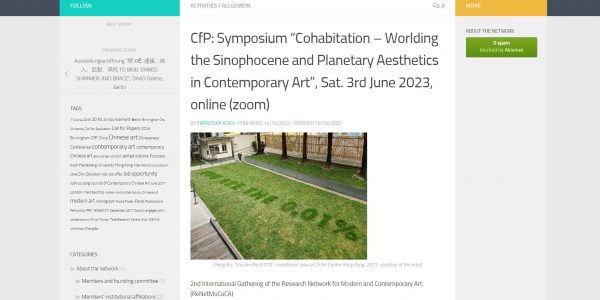Transfer of ReNetMoCoCA blog to hypotheses.org – thank you and welcome there
October 14, 2022
The present blog of the Research Network for Modern and Contemporary Chinese Art, a grassroots based, non-commercial scholarly network, will close. After its inception in 2015 hosted by Nottingham University’s blog server and following a continuous stream of posts related with academic events, information on publications and exhibitions, and jobs, a new editorial team has …
Institutional affiliations
July 19, 2016
The network is informally related to a broad range of academic institutions and (online) academic platforms around the world through the institutional affiliation of its members. These vary in accordance with the stage of the scholarly career of each member – from graduate student to chair of department or director of a museum/collection. Consequently, the …
The network’s founding committee and members
The following scholars constitute the founding committee which supported the launch of the network (chaired by Franziska Koch) and discussed its initial set-up at the international symposium “(In-)direct speech. ‘Chineseness’ in contemporary art discourse and practice. Art market, curatorial practices and creative processes” at the Faculty of Fine Arts, University of Lisbon, Portugal, March 19, …
Membership
To become a member, please send a short application outlining your academic profile in general and your research interest in Chinese art in particular. Please also attach a short CV (max. 1.000 words) and send the application to the webmasters (Franziska Koch and Paul Gladston). Members of the founding committee will confirm membership based on …
Welcome to the International Research Network for Modern and Contemporary Chinese Art (ReNet MoCoCA)
July 18, 2016
About the network The International Research Network for Modern and Contemporary Chinese Art (ReNet MoCoCA) – launched in March 2015 – is conceived to address the needs of the growing, divers, and globally scattered academic community in this field. It helps to bridge communicational and informational gaps that result from local institutional confines of projects, …





